In recent times, a lot of beautiful mosques have emerged around the world with spectacular architecture which attracts tourists, but most importantly as places of worship for Muslims all around the world. We taking you on whistle-top tour of the great mosque, national mosques and the most beautiful mosques in Africa.
We also recommend our guide to the top 5 beautiful islands destinations in Africa.
Hassan II Mosque, Casablanca, Morocco
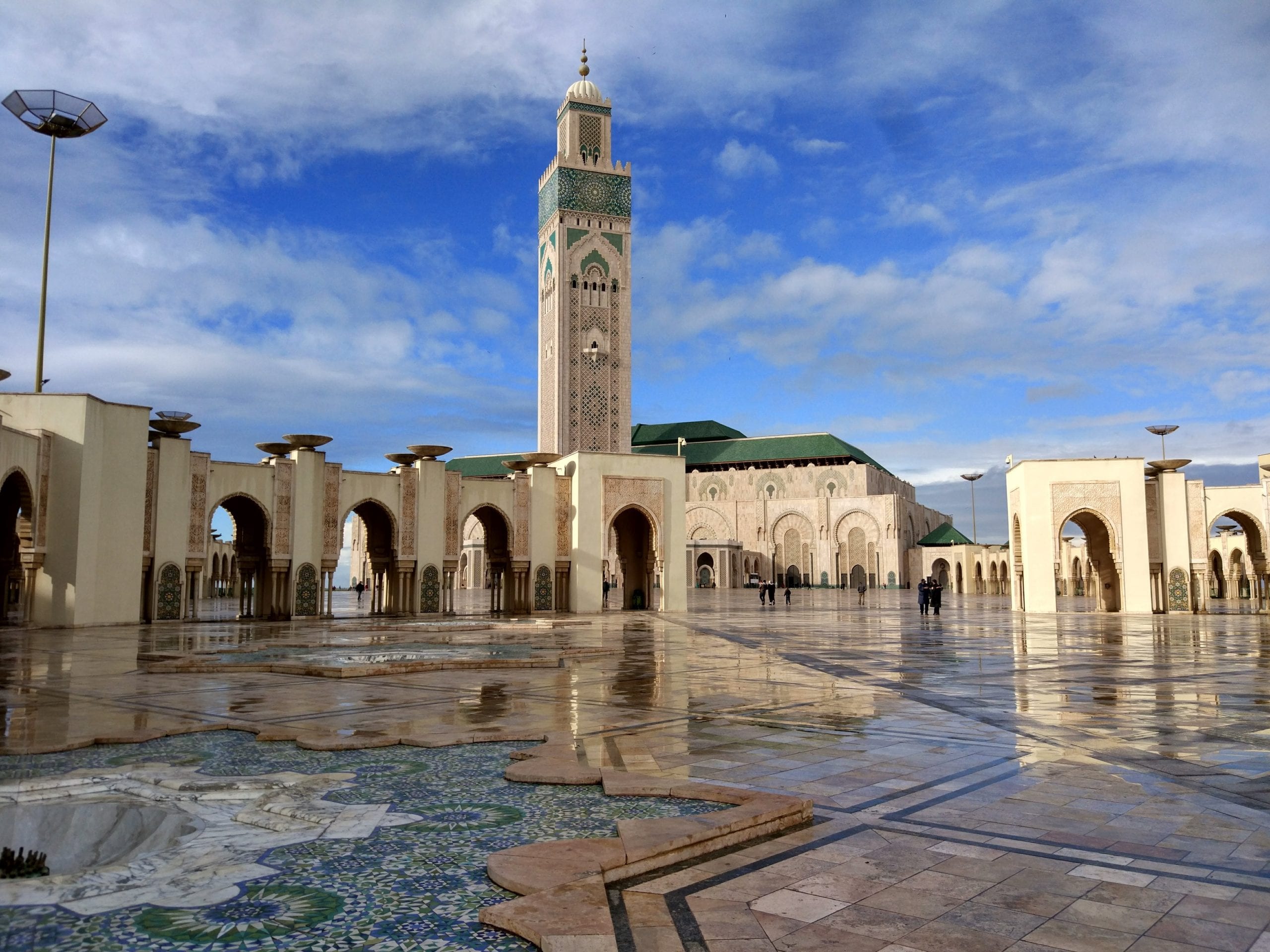
Hassan II Mosque in Morocco is a flamboyant building, built at an enormous expense to commemorate the former king’s 60th birthday. Set on an outcrop jutting over the ocean and with a 210m-tall minaret that serves as the city’s major landmark. It is a showcase of the very best Moroccan artisanship; hand-carved stone and wood, intricate marble flooring and inlay, gilded cedar ceilings and exquisite zellij (colourful ceramic tiling) abound. Multilanguage guided tours of the interior are conducted outside prayer times for modestly clad visitors.
The mosque is commonly thought to be the world’s third-largest mosque after those in Mecca and Medina, and can accommodate 25,000 worshippers. Built and partially funded by King Hassan II (the remaining funds were gathered through a somewhat controversial public subscription process). The mosque complex was designed by French architect Michel Pinseau, took six years to build and was completed in 1993. Its dramatic location overhanging the ocean waves echoes verse from the Quran, which states that God’s throne was built upon the water. Believers pray on a centrally heated floor, and can see the Atlantic breaking over the rocks underneath the glass floor in the basement and feel the sunlight through the retractable roof.
Great Mosque of Kairouan, Tunisia
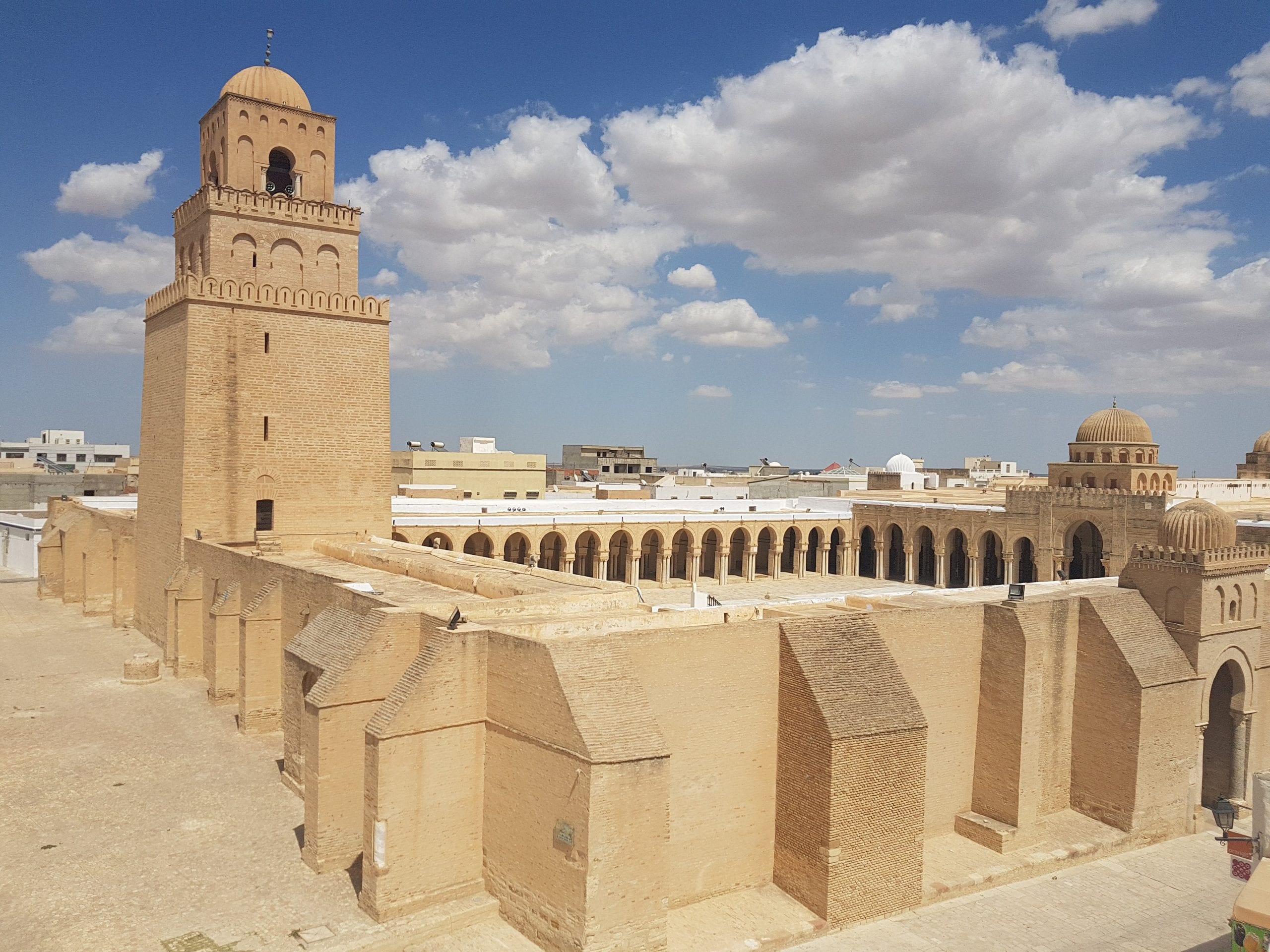
The Great Mosque of Kairouan in Tunisia is the oldest Muslim place of worship in Africa, over a millennia, founded in the year 670 — illustrates the mixed influences of pre-Islamic, Roman, and Byzantine architecture. The Great Mosque, also known as the Uqba Mosque, is at the heart of the city’s heritage. Standing at the nexus of 15 different thoroughfares, in the center of the country between the mountains and the sea, it is considered the fourth holiest site in Islam after Mecca, Medina and Jerusalem.
The structure is part of an expansive complex, the mosque itself covering 10,800 square meters (115,660 square feet). Within, there is a prayer room with 17 naves supported by carved columns, as well as the finely decorated mihrab, a special niche indicating the direction of mecca, outfitted in marble panels and luster tiles covered in floral patterns. There is also a pool, known as the Old Cistern (Al-Majal al-Qadim), and what is said to be the oldest surviving minbar—a finely carved wooden pulpit of Asian teak. Outside, there is a decorated flagstone courtyard and towering, three-story minaret, reminiscent of Roman lighthouses. At 32 meters (104 feet), it remains one of the city’s highest structures. The mosque’s architecture reflects features of pre-Islamic and Eastern Islamic art, as well as later Roman and Byzantine influences. The design has served as a model for many other Maghreb mosques.
The Great Mosque of Touba, Senegal
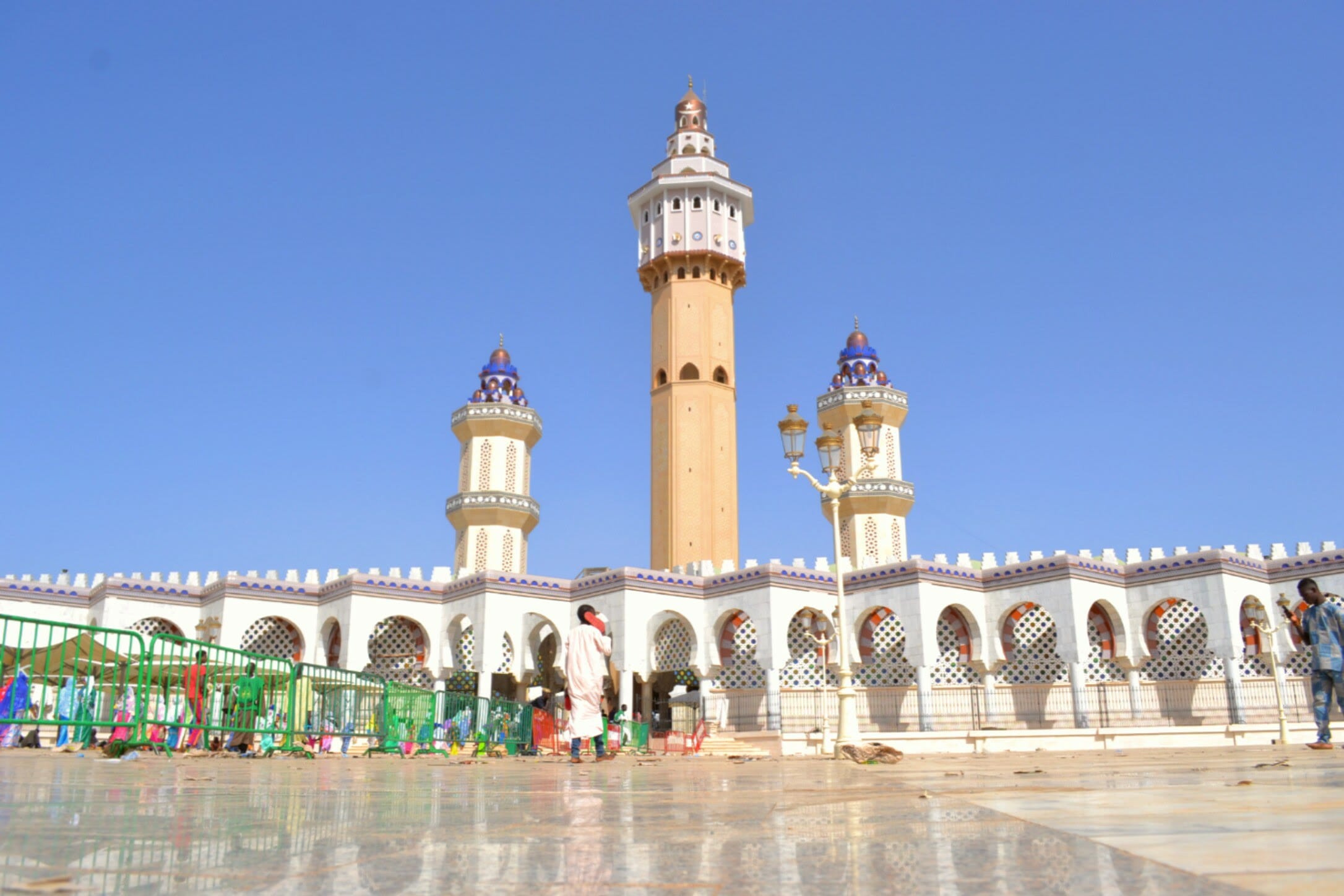
The Great Mosque of Touba in Senegal is an amazing Mosque founded by Amadou Bamba in 1887 and completed in 1963. Bamba died in 1927 and is interred inside the mosque. Since his death the mosque is being controlled by his family. It is the largest building in the city and one of the largest mosques in Africa, with a capacity of 7,000. [3] It is the sight of a pilgrimage, the Grand Magal of Touba.
The mosque has five minarets and three large domes . The central minaret is 87-metre (285 ft) tall,and is called Lamp Fall,who is a reference to Sheikh Ibrahima Fall, one of Bamba’s most influential disciples. The immediate vicinity of the mosque houses the mausolea of Amadou Bamba’s sons, the caliphs of the Mouride order. Other important institutions in the center of the holy city include a library, the Caliph’s official audience hall, a sacred “Well of Mercy”, and a cemetery.
Nizamiye Mosque, Midrand, South Africa
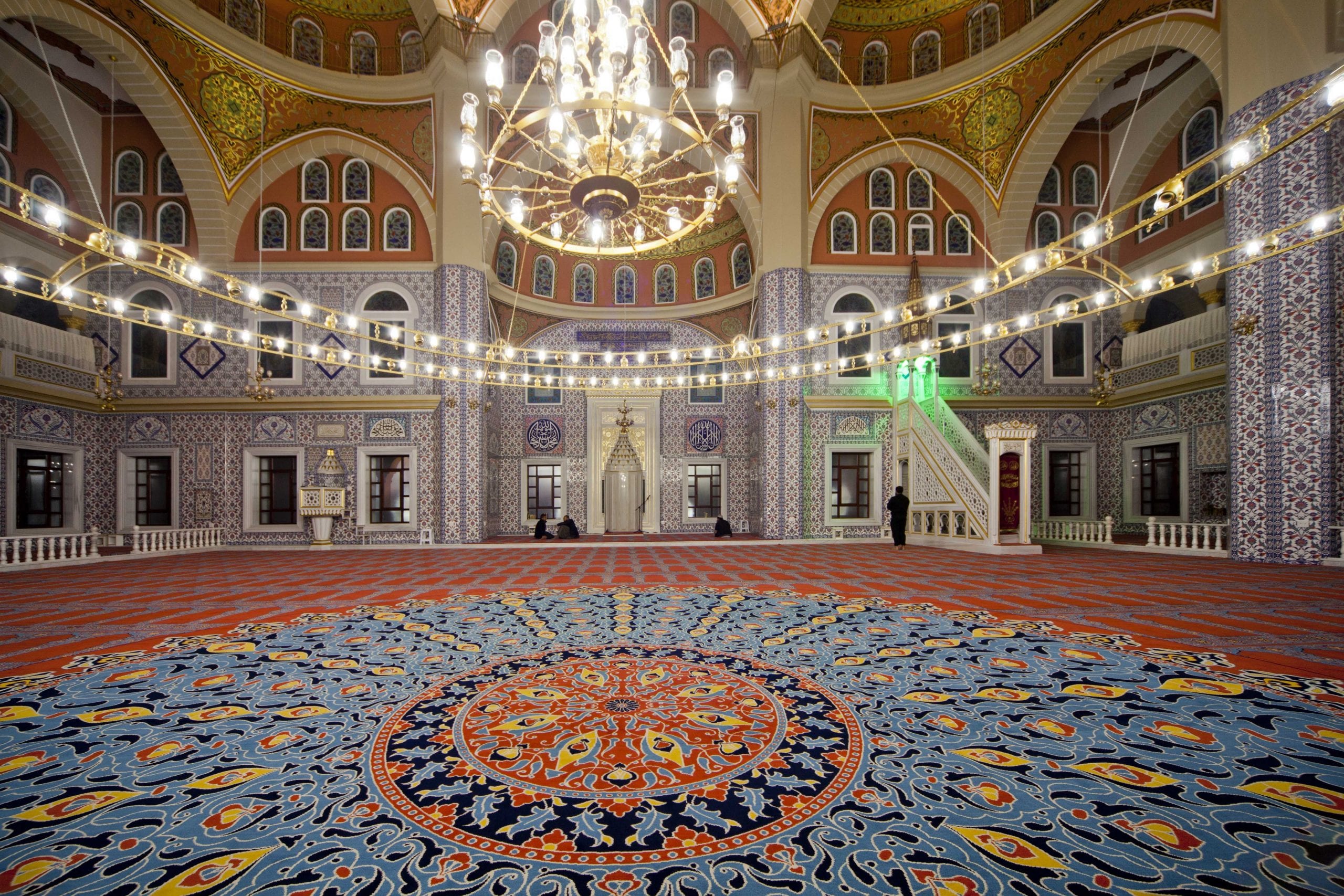
Nizamiye Masjid, often called the Nizamiye Mosque, is a mosque situated in the city of Midrand, Johannesburg, South Africa. Built by a Turkish philanthropist, Nizamiye Masjid was completed in 2012 and is modelled on the 16 -century Ottoman Selimiye Camii mosque in Edirne, Turkey. All the marble, carpets, stained glass and ceramics used in the construction of the mosque were brought in from Turkey, and the intricate interior detailing was hand-painted.
The mosque has 21 domes. The main dome is framed by four towering minarets and rises 32m. More than 200 stained-glass windows decorate the building. The spectacular prayer hall can accommodate more than 3,000 people. In addition to the prayer hall, the main building also houses a small exhibition about Ottoman architecture, meeting rooms and a peaceful courtyard, all of which can be visited. Women will be provided with shawls to cover up and all visitors are asked to remove their shoes before entering the prayer hall. Within the Nizamiye complex there is also a school, clinic, Turkish supermarket, bakery, barber, bookshop, a carpet and ceramics store, and a Turkish restaurant. Don’t miss out on delicious Turkish delights and tea at the bakery afterwards, or if you have time, stay for lunch or dinner at the Ottoman Palace restaurant.
The Great Mosque of Djenne, Mali
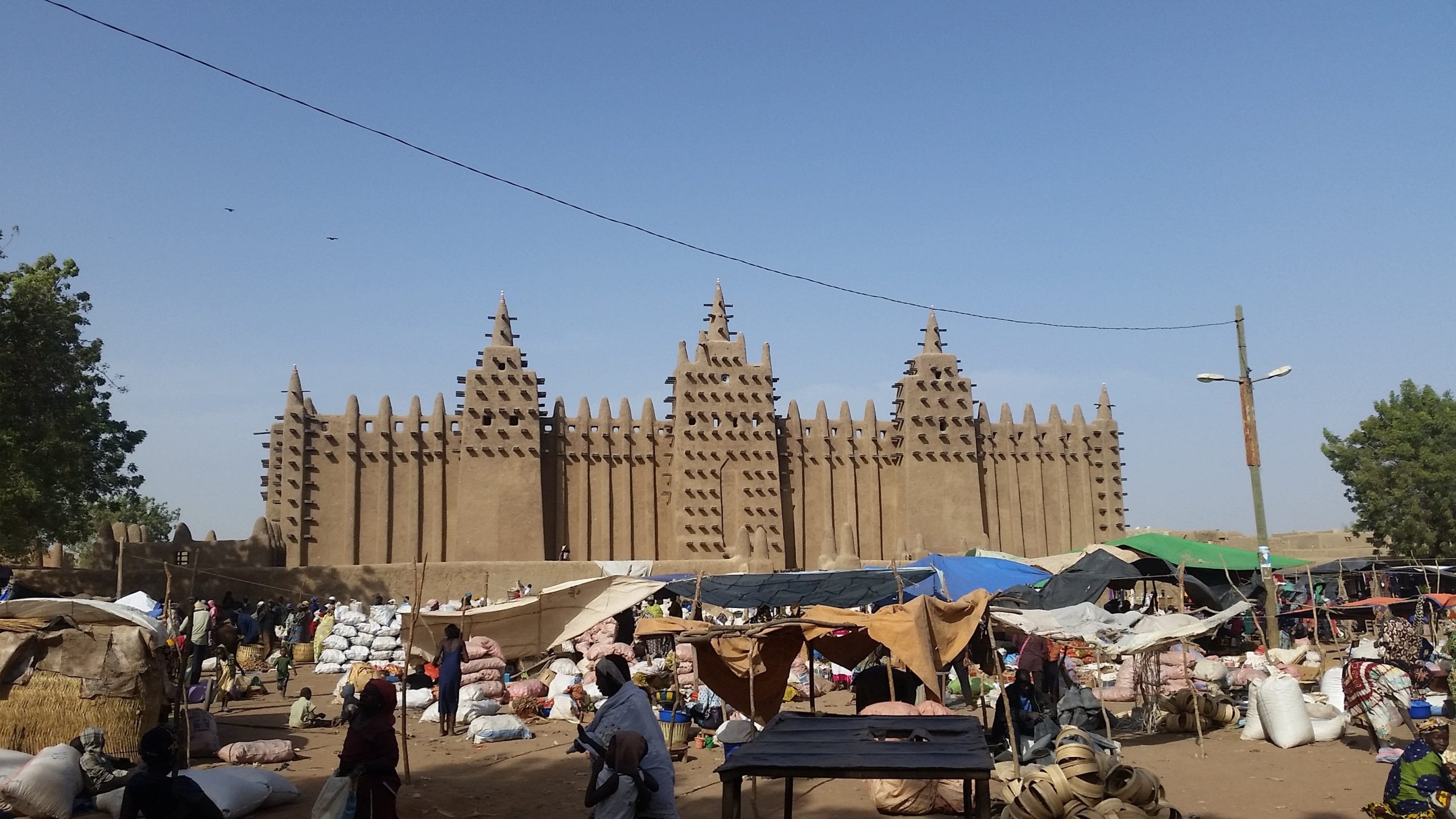
The Great Mosque of Djenne is the largest mud brick building in the world and is considered by many architects to be the greatest achievement of the Sudano-Sahelian architectural style, albeit with definite Islamic influences.
The Great Mosque is located in the city of Djenné, Mali on the flood plain of the Bani River. The first mosque on the site was built in the 13th century, but the current structure dates from 1907. As well as being the centre of the community of Djenné, it is one of the most famous mosques in Africa. Along with the entire city of Djenné it was designated a World Heritage Site by UNESCO in 1988.
Abuja National Mosque, Abuja, Nigeria

The Abuja National Mosque, also known as the Nigerian National Mosque, is the national mosque of Nigeria, a country with a substantial Muslim population. This national mosque of Nigeria was built in 1984 & is open to non-Muslims, except during prayer. Ustadz Musa Mohammed is the chief Imam .This popular mosque is located in the capital city, Abuja, and is situated on Independence Avenue. It includes a library and a conference room centre capable of serving five hundred persons, the office for the Islamic Centre, and residential facilities for the imam and muezzin. It is considered by many as the most beautiful mosque in Nigeria.
Uganda National Mosque
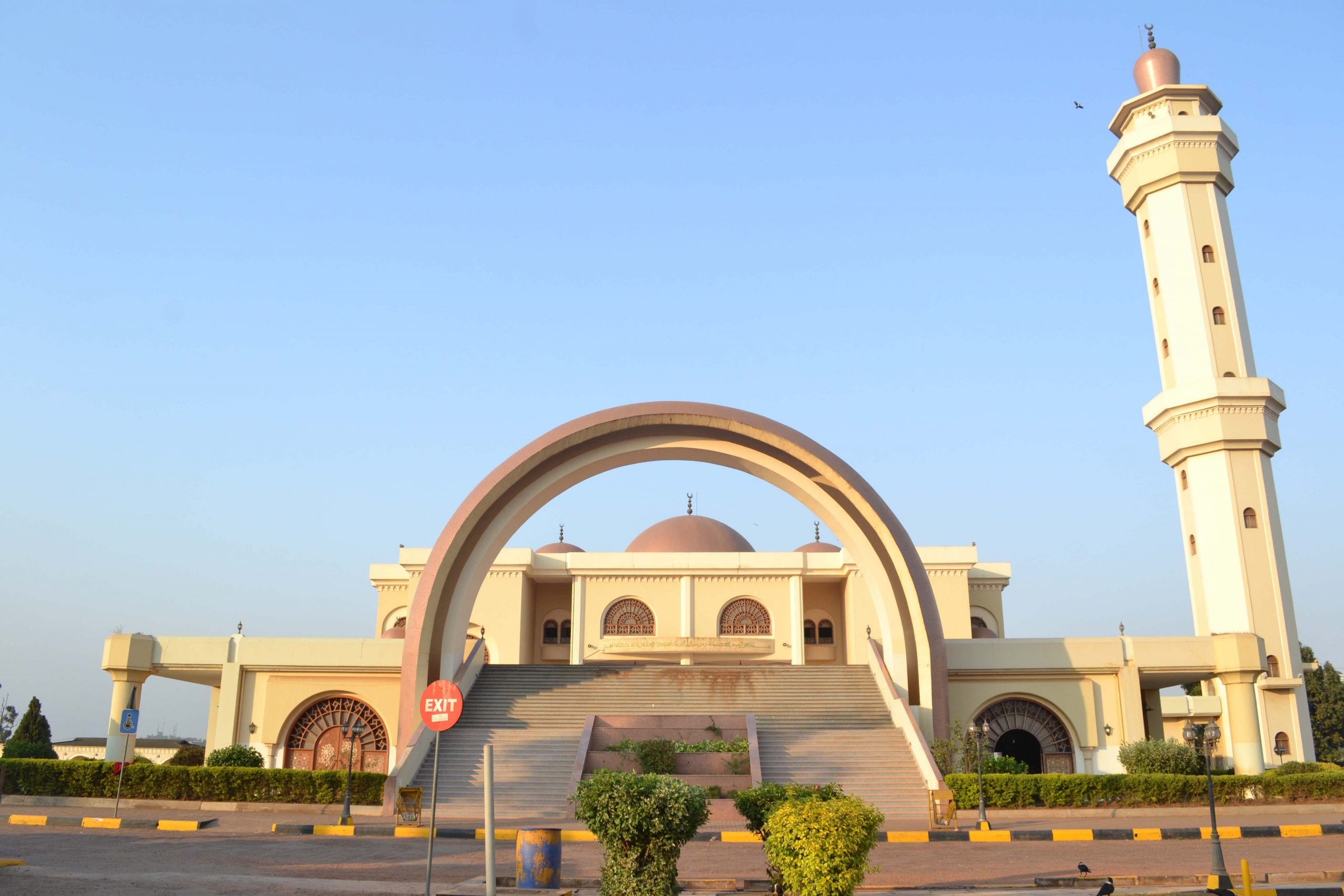
Uganda National Mosque is a popular mosque located at Kampala Hill in the Old Kampala area of Kampala, Uganda. Completed in 2006, it seats up to 15,000 worshipers and can hold another 1,100 in the gallery, while the terrace will cater for another 3,500. Colonel Muammar Gaddafi of Libya commissioned the mosque as a gift to Uganda, and for the benefit of the Muslim population. Uganda has many mosques but this one is a skyscraper mosque. The completed mosque was opened officially in June 2007 under the name Gaddafi National Mosque, and housed the head offices of the Uganda Muslim Supreme Council. It was renamed “Uganda National Mosque” in 2013 following the death of Colonel Gaddafi as the new Libyan administration was “reluctant to rehabilitate the mosque under the old name.”
Al-Azhar Mosque, Cairo
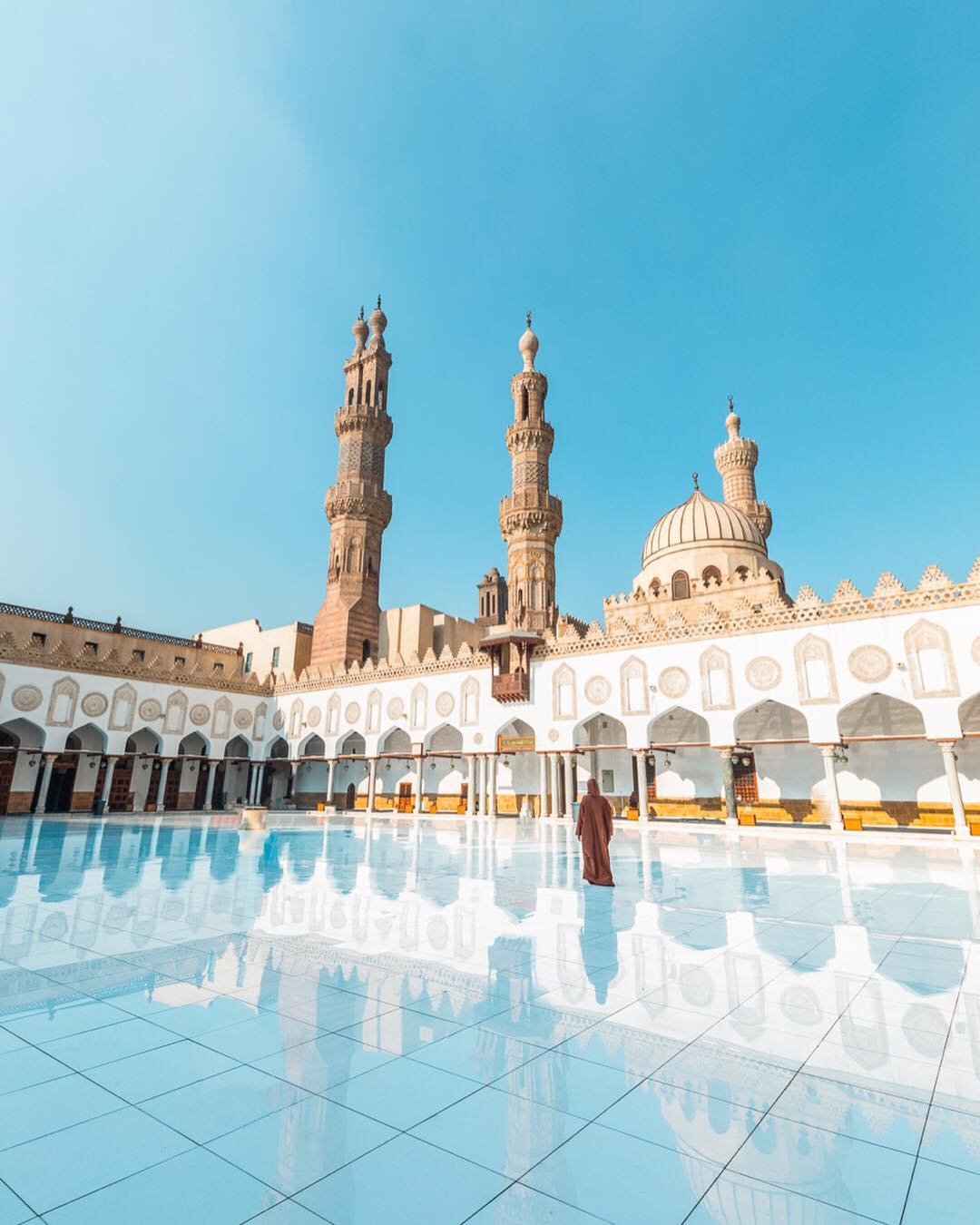
Al-Azhar Mosque ( “mosque of the most resplendent”) is an Egyptian mosque in Islamic Cairo, Egypt. Al-Mu’izz li-Din Allah of the Fatimid Caliphate commissioned its construction for the newly established capital city in 970. Its name is usually thought to allude to the Islamic prophet. Muhammad’s daughter Fatimah, a revered figure in Islam who was given the title az-Zahrā′ (“the shining or resplendent one”). It was the first mosque established in Cairo, a city that has since gained the nickname “the City of a ThousandMinarets. After its dedication in 972, and with the hiring by mosque authorities of 35 scholars in 989. This famous mosque slowly developed into what is today the second oldest continuously run university in the world. Al-Azhar University has long been regarded as the foremost institution in the Islamic world for the study of Sunni theology and sharia, or Islamic law.
The Great Mosque of Tlemcen, Algeria
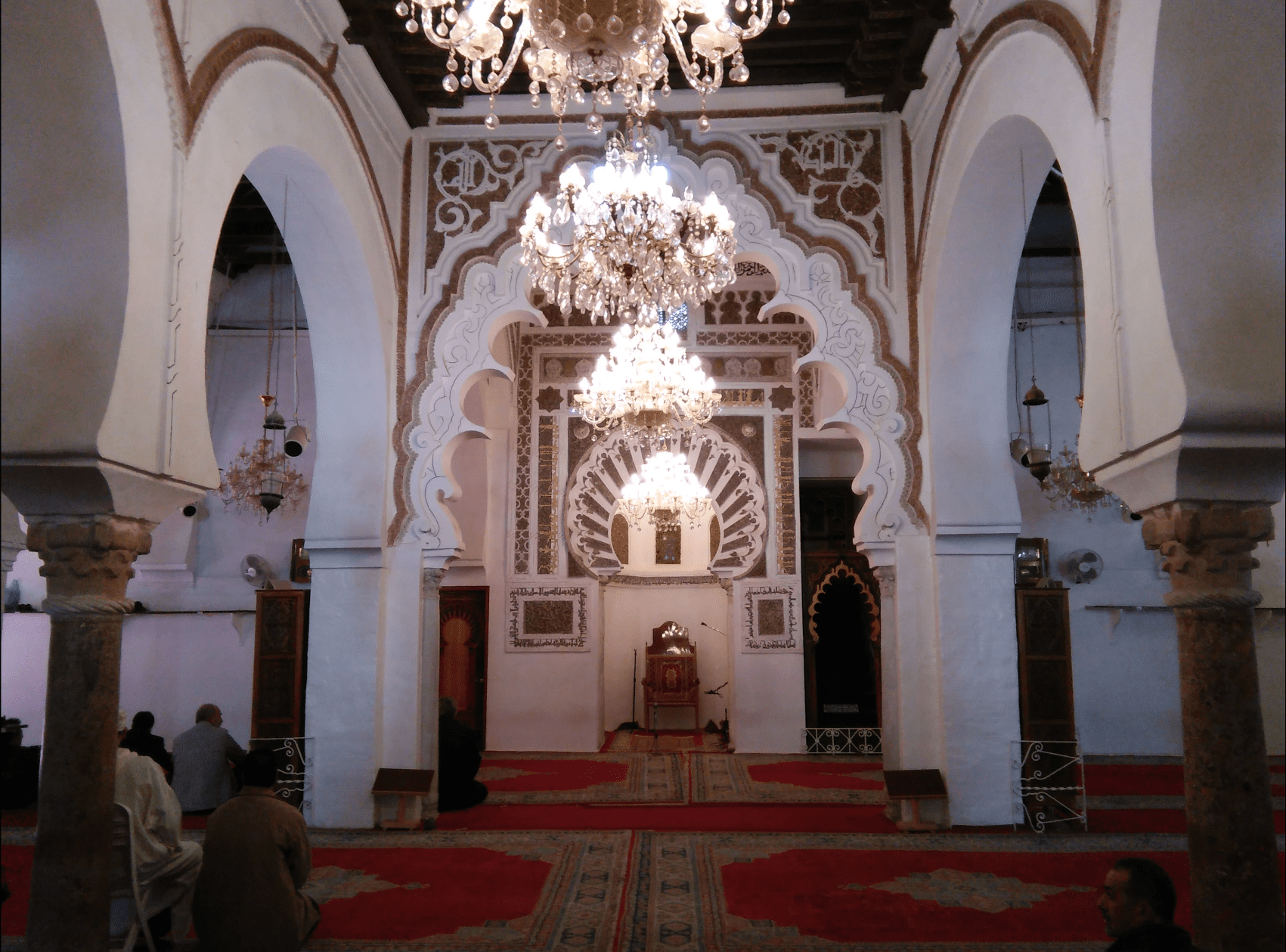
The Great Mosque of Tlemcen was first built in Tlemcen, Algeria in 1082. It is one of the best preserved examples of the Almoravid dynasty’s architecture. It was built under sultan Yusuf ibn Tashfin, but substantially reconstructed and enlarged by his son Ali ibn Yusuf. An inscription dates this reconstruction to 1136. Sultan Yaghmoracen (1236-1283), the founder of the Abdalwadid dynasty of Tlemcen added a section with a minaret and a dome in the 13th century. Next to the mosque there used to be an Islamic court (Makhama) and an Islamic university of considerable fame.
Soofie Mosque, Ladysmith, South Africa
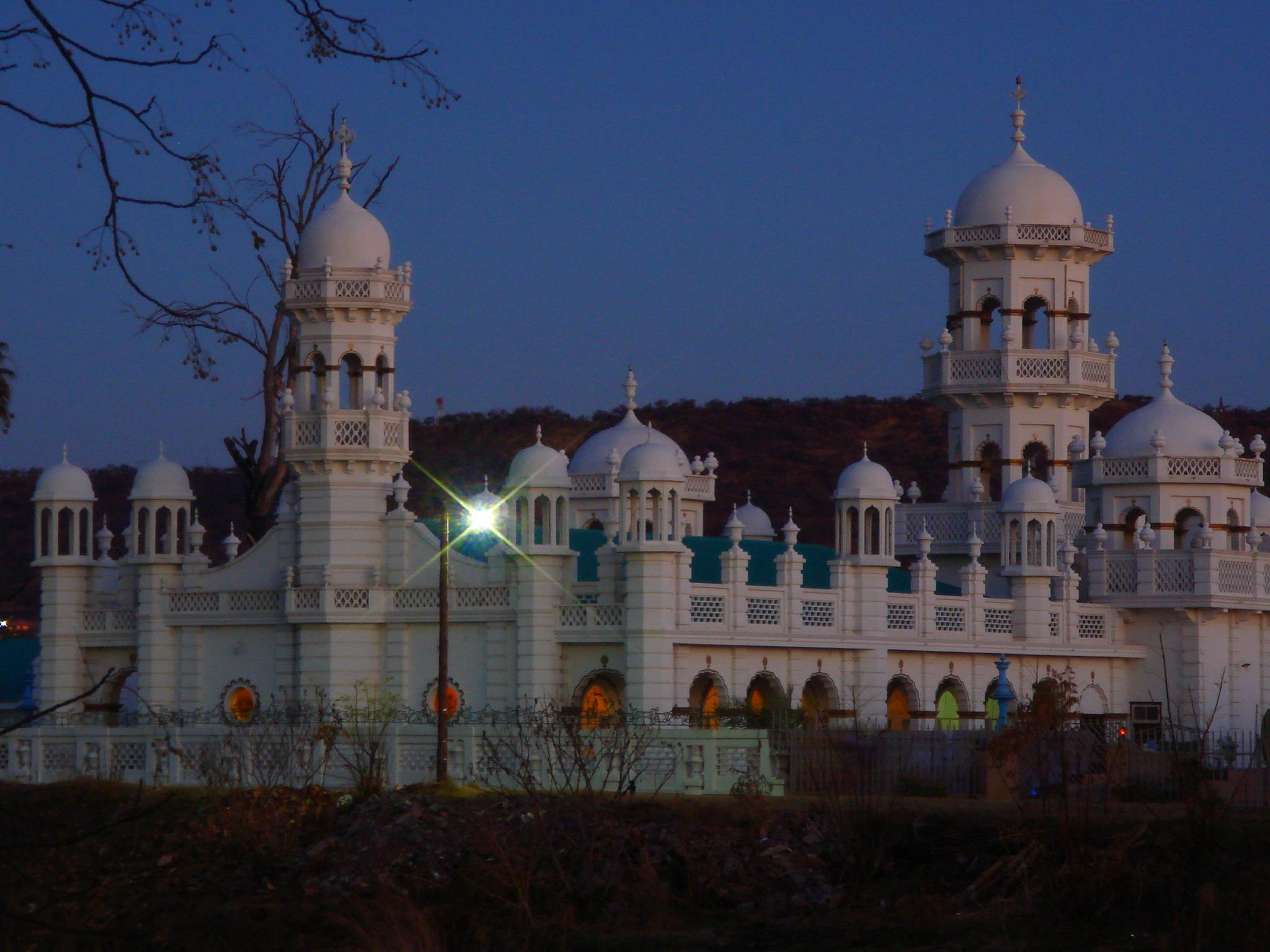
Soofie Mosque was built in 1969 the graceful Soofie Mosque is regarded as one of the finest in the country. Its fine filigree stonework, scalloped archways, proud turrets and distinctive minarets – architectural features of Islamic mosques that look like tall spires – makes it visually appealing and sought after by photographers.
This is a famous mosque in the country, known locally as the Soofie Masjid (mosque), the origins of the marvellous religious building date back to 1895 when Hadrat (also spelt Hazrath) Soofie Saheb, regarded as an important Muslim mystic, arrived in South Africa. He made it his mission to build as many as 12 mosques along the eastern inland seaboard of Durban as he could within 15 years.




